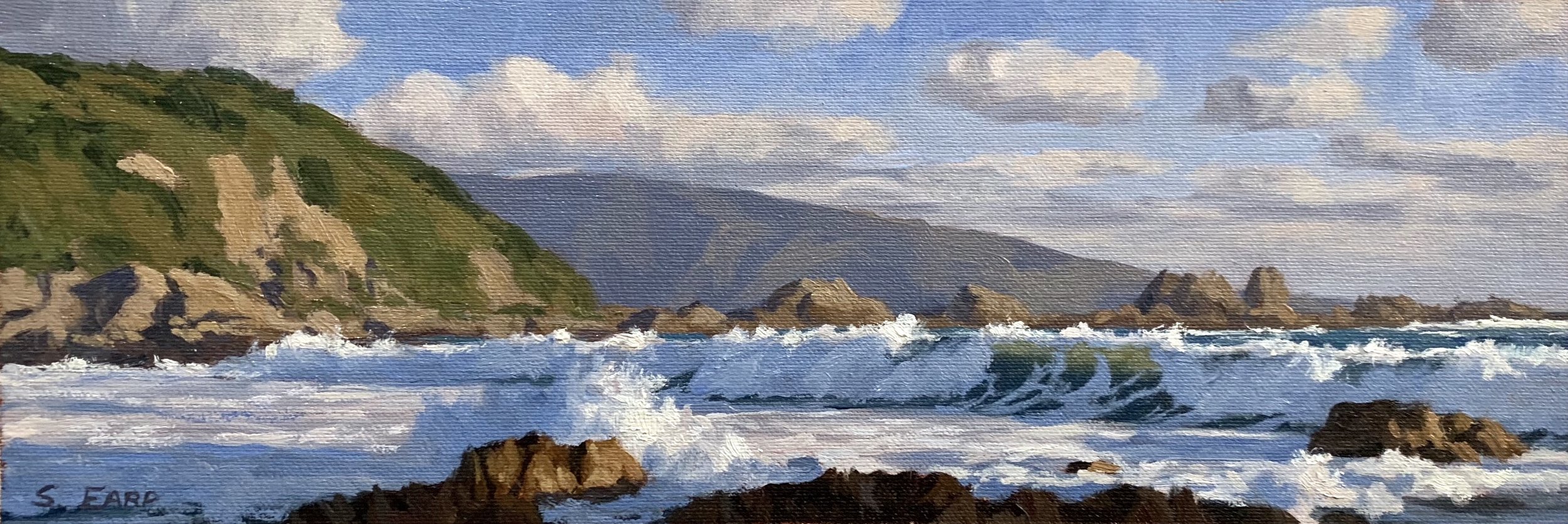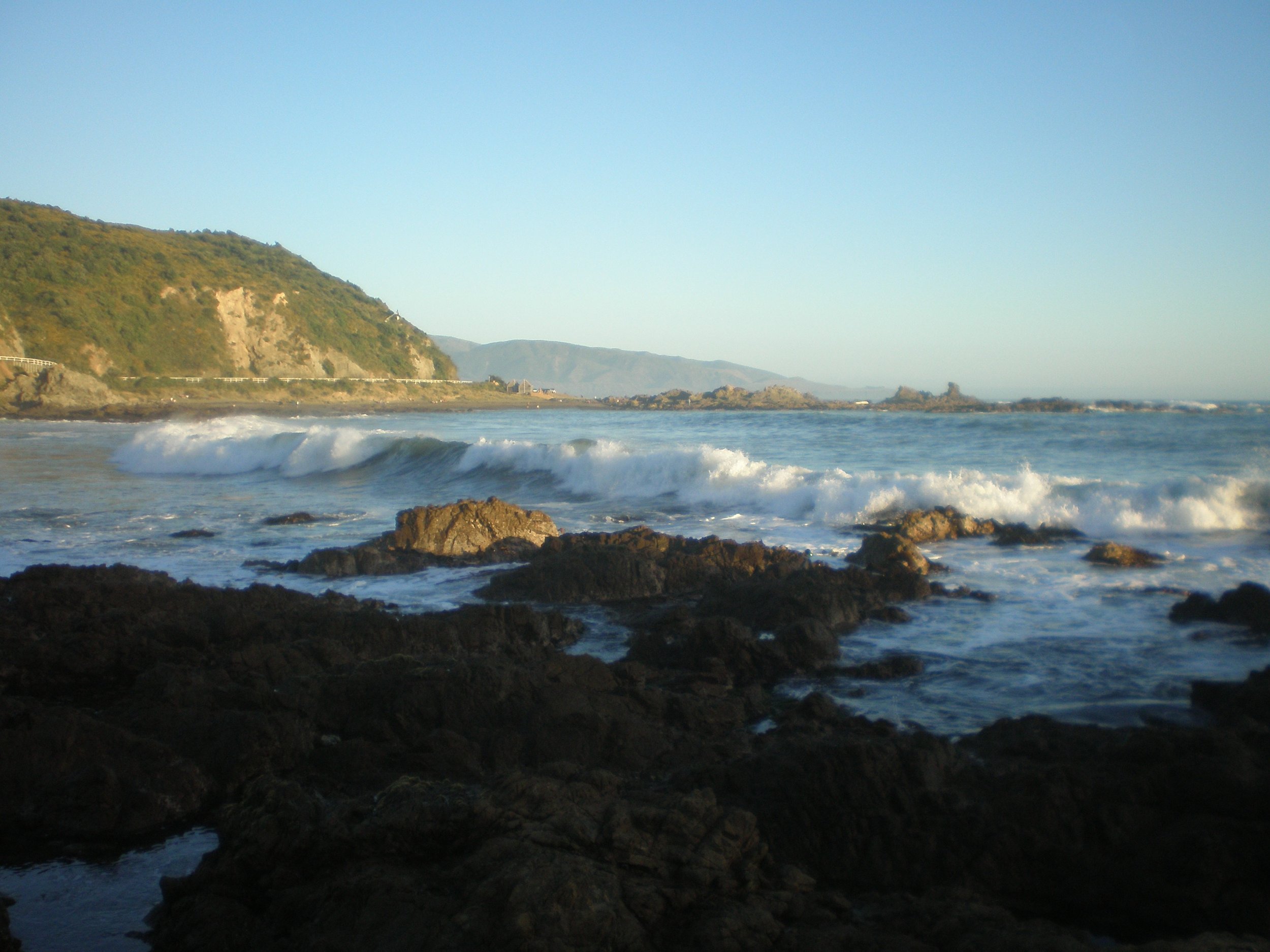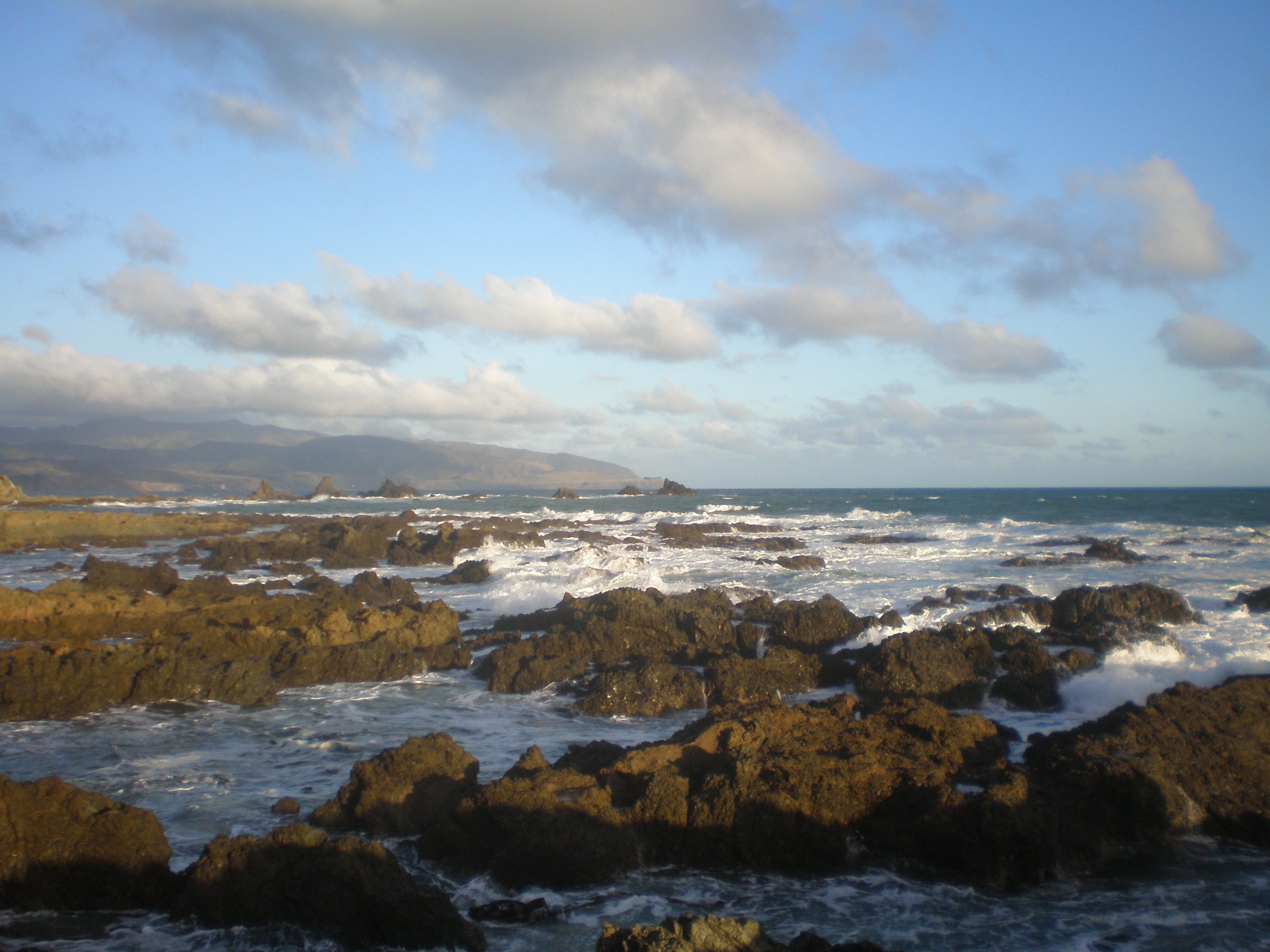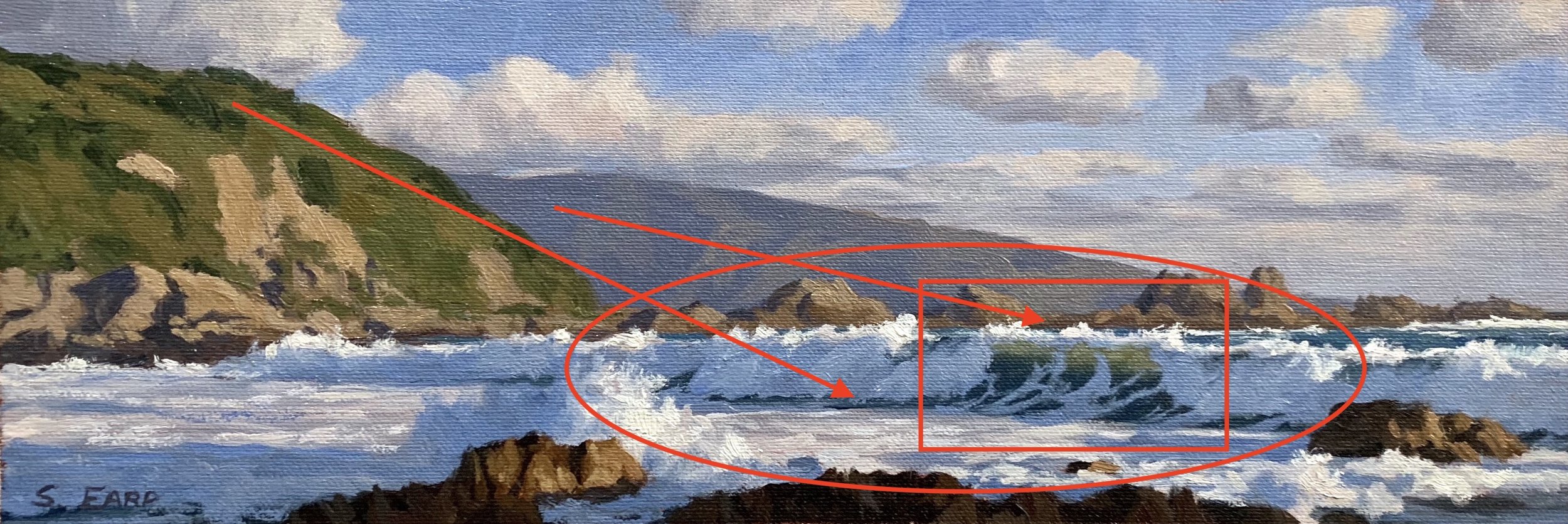
In this blog post I am going to show you how to paint a seascape, based on the coast of Wellington, New Zealand. Whilst this art work is a small painting it a long landscape view as I wanted to capture more of the landforms of this area. The painting measures 12cm x 36cm.
Photo Reference
These are some of the photos I used to paint this seascape, I love the backlit breaking ocean waves and the soft light on the cliffs and headlands.
Please feel free to use them if you would like to have a go at painting this.


Cloud reference

Composition
Whilst this is a long painting I have made the breaking ocean wave the focal area of the painting with a general circular composition. I have left and opening and placed the foreground rocks in a manner that leads the eye towards the distant headland and then back down to the sea and the foreground rocks. The general direction of the headland and cliffs also leads the eye back towards the mid ground rock.
A circular composition is a good solid composition for keeping the viewers eye on the canvas.

Colours and Brushes
Below are the colours I am using for this painting and I am using a No.6 and No.2 flat brushes, a No.1 round brush and a 3/8″ dagger brush.
- Titanium white
- Burnt sienna
- Yellow oxide
- Cadmium yellow
- Cadmium red
- Perylene crimson
- Ultramarine blue
- Phthalo green
Step By Step Demonstration
I’m using a 12cm x 36cm canvas, which I’ve tape to a board with masking tape. It’s pretty much a scaled down version of the larger canvas I will paint later on if I am happy with the colour study.
I prepared it with a layer of burnt sienna which helps with tone and colour as well as warming up the painting. I sketch out the composition with a No.1 round brush using burnt sienna.

Now that I have sketched out my composition I focus on painting my shadows and getting my dark values established.I start by painting the cloud shadows using a combination of ultramarine blue, burnt sienna, perylene crimson and a lot of titanium white and I apply this with a No.6 flat brush.
Next I paint the headland and I use the same colours but with less titanium white to darken the value. I darken the value further and use even less titanium white for the mid ground rocks and cliffs, but what is value? It’s basically how light or dark a colour is.
You may have notice I am using similar colours for the shadows, this is because I am trying to create colour harmony by using similar colours throughout the painting. By using similar colours throughout the painting will read better to the viewer.

I paint the highlights on the clouds using a No.6 flat brush and a mixture of titanium white and burnt sienna. I don’t want the cloud highlights to jump too far forward so I allow it to blend in with my shadow mix.
I paint the sky with a combination of ultramarine blue and titanium white.
I use my cloud highlight mix to paint the highlighted areas of the breaking ocean waves, the white water and foam bursts. By doing this now I am saving on brush cleaning later on!

Next I paint the main body of the ocean including the breaking wave and the white water in the foreground. I am using a combination of ultramarine blue, a little yellow oxide, a little phthalo green and a little titanium white to mix the greenish blue of the ocean. I darken the value of the breaking wave itself by using the same colours but with less titanium white added.
The shadows of the breaking waves and foam are a warm blue colour and I mix this with a combination of ultramarine blue, perylene crimson and titanium white. I apply the paint with a No.6 flat brush to achieve a more painterly effect and cover ground more quickly. In general I try and get away with as large a brush as I can.
For the areas of the water in the foreground I use mainly titanium white but I also mix in a little ultramarine blue and perylene crimson so it’s not completely white. I can then come back later and apply lighter tone to make the water look more three dimensional.
I paint the foreground rock shadows with a combination of ultramarine blue, burnt sienna and perylene crimson, the same colours I was using in the clouds, cliff headlands and rocks.

Now that all my shadows are established I focus on painting the rocks and the foliage on the mid ground headland. I mix the colours in the mid ground rocks with a combination of ultramarine blue, perylene crimson, burnt sienna and titanium white to start with, these are my base colours, then I warm up the mixture with yellow oxide. I lighten the value with titanium white.
In order to increase the saturation and richness of the rock highlights in the foreground I add some kickers which include a little cadmium yellow and cadmium red.
For the foliage in the mid ground cliff I start with cadmium yellow and ultramarine blue. This on it’s own will be too green so I mix in some yellow oxide, cadmium red and perylene crimson. The reds take the saturation out of the green and by mixing in a little burnt sienna and yellow oxide I can make some olive greens. I vary the mixture of the colours to achieve different hues.

I paint the translucency of the breaking wave with a combination of ultramarine blue, yellow oxide and titanium white.
Next I paint the suggestion of soft light on the distant headland by mixing a combination of ultramarine blue, yellow oxide and perylene crimson. On my palette it looks like a warm grey but when added next to the existing colour of the distant headland it has the appearance of a golden green.
At this point I allow the painting to dry so I can then return to it and add a few final details. This painting is not overly detailed but because it’s a small painting it looks detailed enough as the human brain fills in the rest of the information.

Now that the painting is dry I’m now going to focus on adding highlights as I always save my lightest tones until the end of the painting. I sharpen up the clouds adding titanium white mixed with a little yellow oxide and burnt sienna and I also tidy up the sky by adding some fresh colour.
I sharpen up the mid ground rock shadows as I felt they were tonally too light before. I also lighten the cliff faces in the mid ground headland and add some lighter areas of colour to the foliage.
I apply some highlights to the foreground rocks using my rock mixture, cadmium yellow, cadmium red and a lot of titanium white.
I add foam patterns to the breaking wave with a No.1 round brush and a mixture of ultramarine blue, perylene crimson and titanium white.
Finally I add the highlights to the top of the breaking wave, the foam burst and the white water. This is where I apply the lightest values in my painting and by doing so, it will make the water pop. I mix titanium white with a very small amount of yellow oxide and I apply it selectively to areas of the water to make it look three dimensional.
And with that the painting is complete.

Thanks for reading 😊
